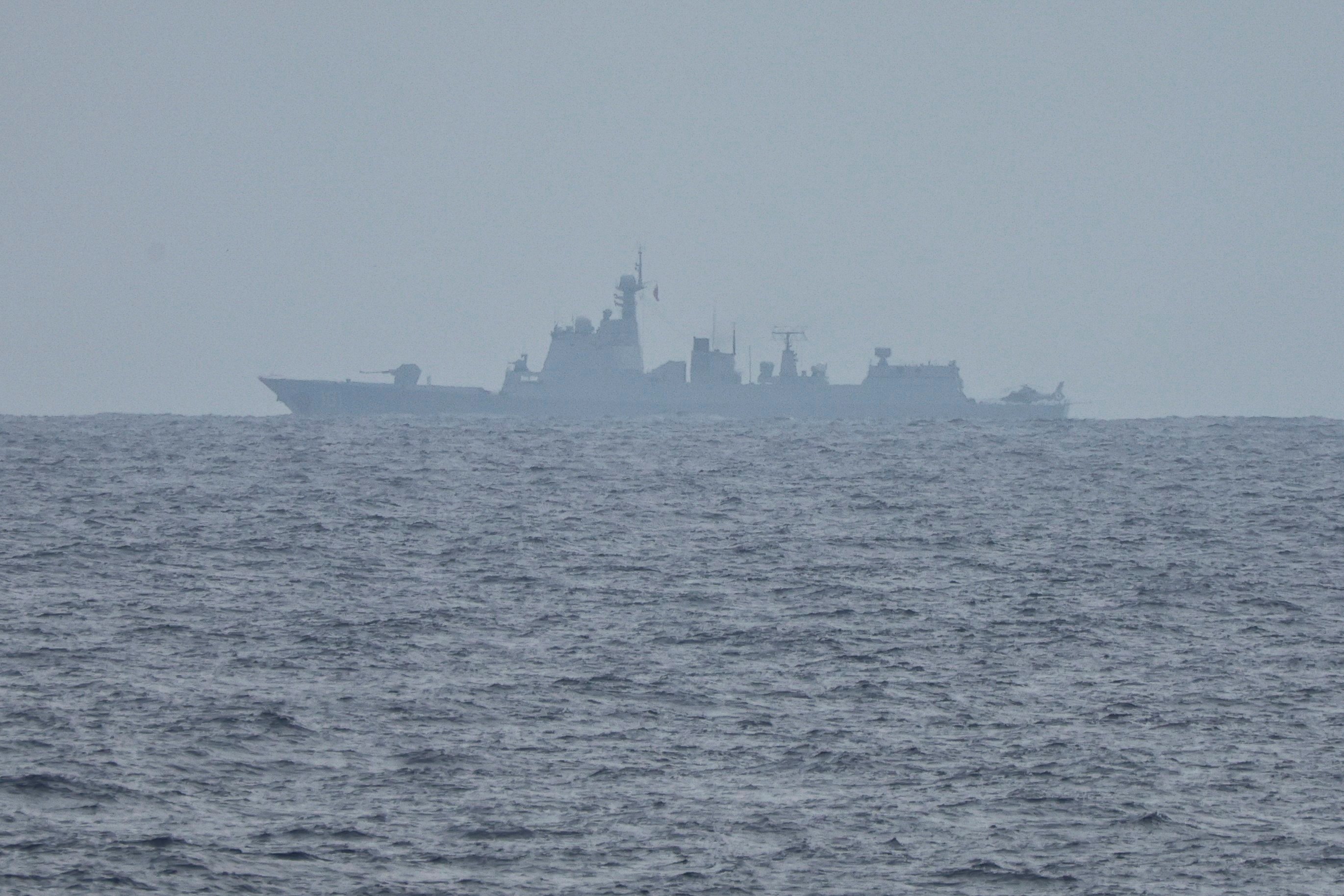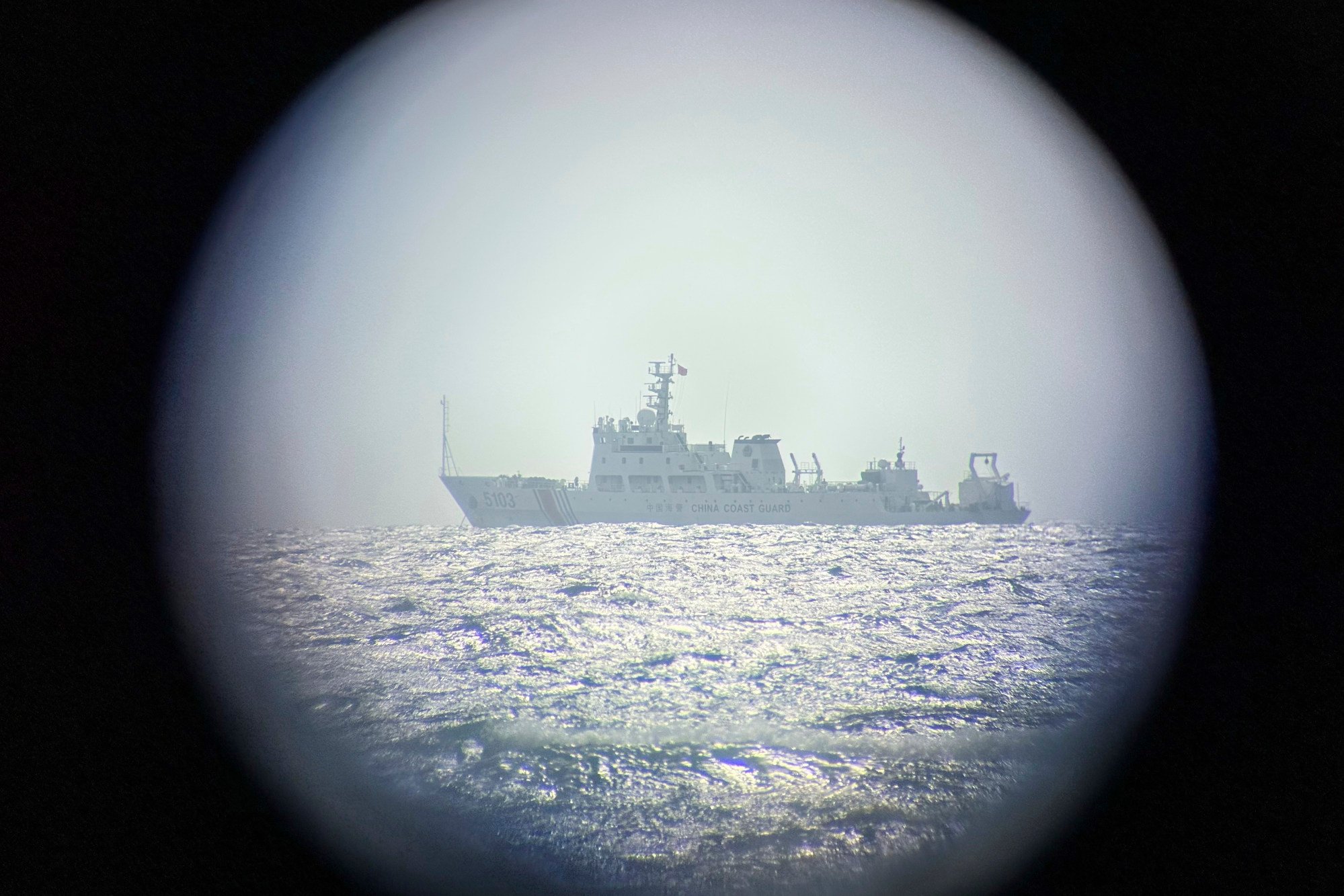Loitering with intent: Beijing’s new silent South China Sea strategy?
Analysts say quiet incursions are part of a deliberate effort by China to normalise its presence in previously unpatrolled areas

When a Chinese coastguard vessel appeared off the coast of Zambales province in late May, it didn’t fire a shot or issue a threat. Instead, it lingered – uninvited, silent and unmoving. To analysts in Manila, the message was loud and clear: Beijing was testing new tactics in the South China Sea, one quiet incursion at a time.
The coastguard vessel was detected roughly 76 nautical miles (140km) off Palauig Point – well within the Philippines’ exclusive economic zone and about 220km southeast of Scarborough Shoal, the disputed reef seized by Beijing from Manila in 2012.
In response, the Philippine coastguard deployed a 44-metre (144-foot) patrol vessel to intercept the Chinese ship, according to Commodore Jay Tarriela, spokesman for the coastguard’s operations in the West Philippine Sea, the term Manila uses for its South China Sea EEZ.
“Since last night, the Philippine coastguard has directed the multi-role response vessel, BRP Cabra, off the coast of Zambales to challenge the presence of a China coastguard vessel,” Tarriela said in a statement late last Sunday.
In rough seas with waves as high as three metres (10 feet), the Cabra repeatedly hailed the Chinese ship, asserting it had “no legal authority to patrol within Philippine waters”, Tarriela said. The Chinese vessel did not respond.
China’s claim to nearly the entire South China Sea overlaps with the EEZs of several Southeast Asian nations. A 2016 ruling by an international tribunal rejected these expansive claims, but Beijing has refused to accept the verdict.
For years, Chinese coastguard and maritime militia vessels have patrolled high-tension areas such as Scarborough Shoal and the Spratly Islands, leading to maritime stand-offs, collisions and injuries – including a Filipino sailor who lost his thumb last year during a skirmish near Second Thomas Shoal.

Although both countries have committed to easing tensions, analysts say Beijing’s latest moves suggest a shift in strategy, projecting power into areas not previously considered flashpoints.
Tarriela told This Week in Asia that the incident off Palauig might be part of an attempt by China “to normalise its presence” in waters that were neither contested nor within its typical patrol range.
He recalled that earlier this year, a 12,000-tonne Chinese vessel – nicknamed “the monster” – had operated just 54 nautical miles (100km) off Capones Island, staying in the area for several months before finally withdrawing.
“They were there since January until I think it was like April, and it was only this time around that they have decided to once again get near the coast of Zambales,” he said.
In a separate encounter in May, the Philippine coastguard intercepted a Chinese research vessel 92 nautical miles (170km) off the coast of Ilocos Norte, a northern province where the Typhon missile system was last spotted before being relocated to an undisclosed location.
Tarriela expressed concern about the vessel’s deep-sea mapping capabilities, claiming it could be used to prepare the seabed for Chinese submarine operations.

Projecting power
Observers say these incursions into previously unpatrolled areas reflect Beijing’s long-term effort to reinforce its historical claims and assert dominance over the waterway.
“China’s aggression in normalising its presence in contested and unusual areas goes to show their psychological operations and imposing their hard power in international waters,” said Chester Cabalza, founder and president of the International Development and Security Cooperation think tank.
“Their hardline stance on their ownership of the South China Sea is embedded in their political system and military doctrines, which must be corrected.”
Cabalza added that China’s growing maritime assertiveness could be interpreted as a “defence mechanism over the Philippines’ overwhelming legal support from the international community”.
At the Shangri-la Dialogue in Singapore earlier this month, Philippine Defence Secretary Gilberto Teodoro said that “none have agreed with China, and none has condemned the Philippines for standing up against China in the face of a threat to its territorial integrity and sovereignty” – a pointed response to Chinese military officers questioning Manila’s actions.
Joshua Espena, an international relations lecturer at the Polytechnic University of the Philippines, said Beijing’s latest manoeuvres “simply suggest that China is not merely an assertive party to a dispute; it is a resolute hegemon aiming to project its power to smaller states”.
“If anything, it shows that Beijing has a deliberate grand strategy in establishing fait accompli in the Philippines by making the Chinese coastguard’s presence ‘normal’,” he added.
Espena said that China viewed key flashpoints as under its control and denied access to others – even in defiance of international law – as it sought to normalise its presence.
China’s approach was “always strategic and deliberate”, said Sherwin Ona, a political-science professor at De La Salle University and an international fellow at Taiwan’s Institute for National Defence and Security Research.
He said Beijing’s incursions into non-contested areas aimed to bolster legal and historical claims, amplified through state media to “create historical basis, thus leading to normalisation”.

With China already exercising de facto control over various disputed regions, Ona warned its “long and consistent presence” would only deepen those claims.
“This can also be viewed as a direct challenge to the rules-based order that the US and other allies are pushing in the South China Sea,” he added, further citing Beijing’s efforts to secure an “advantageous position” in a proposed regional code of conduct.
Cabalza argued that the Philippines could use these provocations as an opportunity to assert its own maritime capabilities.
He said China’s actions opened a window for Manila to “totally enforce new maritime laws and its latest military strategy to safeguard its sovereignty in the northern frontier of the archipelago and simulate its fabled self-reliant defence posture”.
Espena agreed, warning that any real damage caused to the Philippines’ claims “would stem from its failure to take action”.
“Manila needs to be more creative in combining all elements of power as a ‘muscle package’ rather than just reporting malice,” he said.